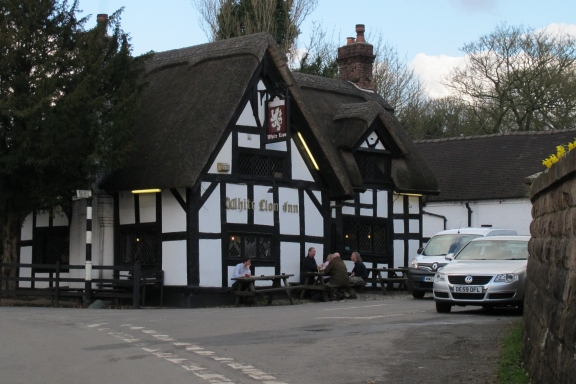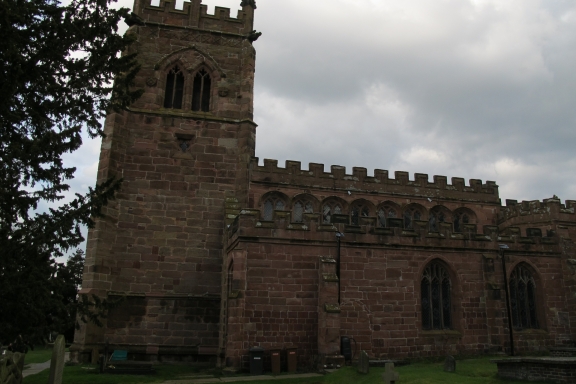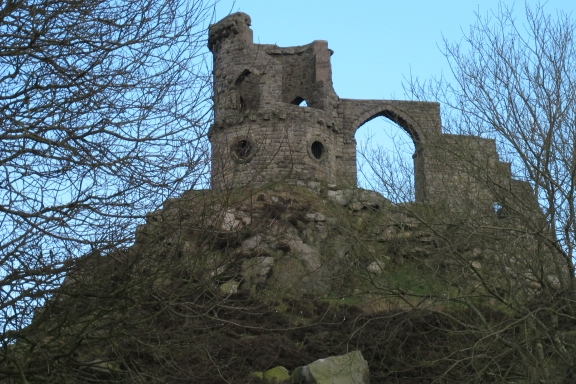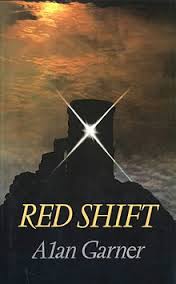 The motorway roared silently. Birds skittered the water in flight to more distant reeds, and the iron water lay again, flat light reflecting no sky. The caravans and the birches. Tom.
The motorway roared silently. Birds skittered the water in flight to more distant reeds, and the iron water lay again, flat light reflecting no sky. The caravans and the birches. Tom.
Sometimes you read a novel that generates such a personal response – that feels so profoundly, so intimately yours – it’s hard to articulate. It’s a feeling of blessed serendipity, like stumbling across something in the road, something half-buried in dirt, and discovering it’s that treasured thing you lost some years before and thought never to see again.
As a reader and as a writer, these are the moments you chase but can never predict.
All of this happened, in this case, because of something that did not happen. When I was asked if I’d like to be on a panel at Eastercon discussing the landscapes of Alan Garner’s fiction. I regretfully had to decline, stating that aside from stumbling upon and loving The Owl Service – both book and TV series – when I was twelve, I hadn’t read Garner since, and really didn’t know his work except in outline. Which of course immediately set me thinking: why didn’t I, when Garner’s oeuvre, with its emphasis on landscape and myth, lies so close to a vital seam of my own literary interests?
It seemed like a major oversight to me. And so later that day, I purchased the eBook of Garner’s Red Shift, widely thought to be the cornerstone of his work and of his thinking. We happened to be travelling to London the following day, which gave me four hours’ worth of train journey in which to read the novel more or less uninterrupted, which I think is how this extraordinary book should ideally be encountered. At a little under 200 pages, it is not a long novel. So when you learn that it was six years in the making, you might feel surprised – until you begin to experience it, and realise how intact it is, how entire unto itself, how every word contracted into this interweaving, this rope-hard tapestry, has been personally chosen and considered, how this novel – deceptively simple on the page – truly is like that found thing in the road, that axe head: clodded with dirt yet pristine, hard, like the ages, like the granite fundament of the island that inspired it.
A cursory reading of Red Shift might leave you with the impression that in its modern sections especially it is dated. It is hard to imagine many older teenagers these days getting so hung up on what their parents think, or becoming mired in ideas of sex as being sordid or sinful. Yet read – persist – and you will find there is something so heartrending, so universal in what Jan and Tom experience that it still works, in spite of its awkwardness or even because of it. It is interesting, too, that the women in Garner’s story are as powerful as the men, if not more so. It is Jan, in the end, who is able to make the transition from child to adult, a transition Tom struggles with until the end.
I found the novel’s evocation of the 1970s particularly resonant. The sequence where Tom and Jan first discover the road to Barthomley, walking out across the railway sidings at Crewe seemed, to me, like the summer of 1976 itself: instantaneously mythical, a hush in time, a touchstone memory:
They walked through undulating country, golden with light from the cold sun.
“That’s where I’d like to try for, one day,” said Jan. “I see it from the train, and then I know you’re near. It looks like a lonely old man sitting up there.”
“We’ll go,” said Tom. “But I doubt it’ll be today, unless you feel like running.”
“Is it a castle?”
“A folly. Not real. It’s called Mow Cop.”
“I like mountains. Can we go, even if it is only a folly?”
“Sure, I said. But how about something closer for today?”
Across the fields a red sandstone church tower stood from a valley. The landscape was quiet, scattered farms of black timber, and the lane leading towards the church.
It is their Grand Meulnes moment, instantly in decline, like radioactive half-life, from the second it is exposed to the light.
It says everything about Garner’s skill in imagining, that the novel’s strands from earlier timelines – one set in Roman Britain, one set during the English Civil War – often and increasingly appear to be running contemporaneously with the modern day section. As the novel nears its end, these time-jumps – seamless, unannounced and unaccounted-for – can occur several times in a single page. The passages describing the massacre at Barthomley, in their terrifying understatement, are a masterclass of literary economy.
What is most modern about this novel – what makes it a work of modernism – is that it offers no explanation for itself, no long-winded exposition of what is happening. We must run to catch up, to stay level. We must enter into the spirit of this thing, not caring too much if there are moments when we doubt our understanding of what is going on.
And even as Red Shift eschews objective realism in favour of a more subjective brand of expressionism, still it retains the rough-hewn, adze-sharpened, square-buttressed granite persistence of the mediaeval. Like the sinuously evolving ballads of British folklore, its abiding loyalty is to the land. We pass through it, before passing it on.
It is with eerie synchronicity that I came to Red Shift immediately after 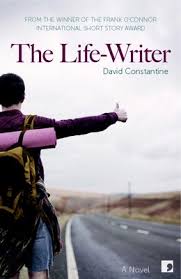 reading David Constantine’s acutely felt second novel The Life Writer, which shares a similar relationship with land not a million miles away from Barthomley church. It may even be that reading the Constantine, which feels intuitively closer to my own practice – Red Shift is mainly dialogue, which I don’t write much of; The Life Writer is mainly internalised reflection, which I do – actively prepared me in some way for reading the Garner.
reading David Constantine’s acutely felt second novel The Life Writer, which shares a similar relationship with land not a million miles away from Barthomley church. It may even be that reading the Constantine, which feels intuitively closer to my own practice – Red Shift is mainly dialogue, which I don’t write much of; The Life Writer is mainly internalised reflection, which I do – actively prepared me in some way for reading the Garner.
However and whatever has happened, it feels significant for me as a writer in a way I did not anticipate.
*
Sadly, we didn’t arrive at Eastercon until gone 5.30 on the Friday, so it was too late for me to attend the Alan Garner panel even as a spectator. But what we were able to do instead, on our way back from Scotland – we spent a week in the Highlands immediately following Eastercon – was stop off at the places where the key action of Red Shift takes place. It had been raining for most of the morning, but as we drove into Cheshire the weather changed, flooding the countryside with evening sunshine. The landscape felt utterly unchanged from how it had appeared to me as I read about it in the novel. I was thrilled to the bone.
